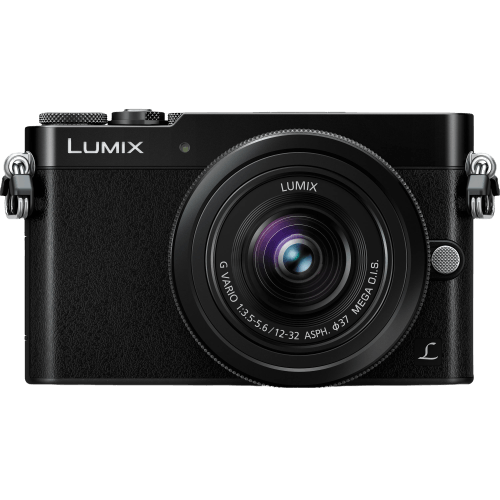Panasonic Lumix DMC-GM5 Specs and Scores

The Panasonic Lumix DMC-GM5 receives a score of 48 out of 100. Introduced in September 2014, this mirrorless camera has a launch price of $650. Its dimensions are 99 x 60 x 36mm, and it weighs only 211g (0.47 lbs). Despite being released over 7 years ago, the GM5’s specifications still hold their own in today’s market. The compact size and lightweight design make it an attractive option for photographers who value portability and convenience.
Panasonic Lumix DMC-GM5 Overview and Optics
The Panasonic Lumix DMC-GM5 receives an optics score of 49/100. This camera features 16 megapixels, a shooting speed of 5.8, and a CMOS sensor. The Venus Engine processor and a DXOMARK score of 66 for the sensor contribute to its performance. The GM5 uses a Micro Four Thirds sensor size and a Micro 4/3 lens mount. However, it lacks image stabilization and has an aspect ratio of 4:3.
In the current market, the GM5’s specifications do not stand out. Competing cameras offer higher megapixel counts, faster shooting speeds, and better image stabilization. The Micro Four Thirds sensor size and Micro 4/3 lens mount are common, but the lack of image stabilization can limit performance in certain situations. The 4:3 aspect ratio is also less versatile compared to other options.
The Panasonic Lumix DMC-GM5 has decent optics, but its specifications are not exceptional in today’s market. The absence of image stabilization and the 4:3 aspect ratio may limit its appeal to some users.
Panasonic Lumix DMC-GM5 Video Performance
The Panasonic Lumix DMC-GM5 receives a video score of 70 out of 100. This camera offers Full HD video resolution with maximum dimensions of 1920 x 1080. It also provides a maximum video frame rate of 60fps, ensuring smooth video playback. Additionally, the camera features built-in time-lapse functionality.
In the current market, the DMC-GM5’s video capabilities are decent but not exceptional. Many modern cameras now offer 4K resolution, providing much sharper and detailed footage. However, the GM5’s Full HD resolution and 60fps frame rate still deliver good quality videos for casual users and amateur videographers.
The Panasonic Lumix DMC-GM5’s video performance is satisfactory for those who do not require the highest quality video features. Its time-lapse function adds creative possibilities, making it a suitable option for users seeking a compact camera with respectable video capabilities.
Panasonic Lumix DMC-GM5 Features and Benefits
The Panasonic Lumix DMC-GM5 scores 54/100 in its features section. With a 3-inch screen size and a resolution of 921,000 dots, this camera provides adequate display quality for users. The touchscreen functionality offers ease of use, while the lack of a flip screen may limit its flexibility in certain shooting situations.
The camera does not possess GPS capabilities, which could be a disadvantage for photographers seeking to geotag their images. However, it does have WIFI connectivity, allowing for seamless transfer of photos and videos to other devices. The absence of Bluetooth support might be a drawback for some users, but the WIFI feature compensates for this to a certain extent.
Considering the above-mentioned specifications, the Panasonic Lumix DMC-GM5 offers a decent set of features. While it may not be the most advanced camera in today’s market, it still provides a satisfactory user experience for casual and hobbyist photographers.
Panasonic Lumix DMC-GM5 Storage and Battery
The Panasonic Lumix DMC-GM5 receives a storage and battery score of 13/100. This camera has one memory card slot, which accepts SD, SDHC, and SDXC cards. In today’s market, having a single memory card slot is common, but not ideal for professional use where backup storage is necessary.
The battery life of the DMC-GM5 is 220 shots, which is lower than the average battery life found in modern cameras. The camera uses a DMW-BLH7 battery type and does not support USB charging. This lack of USB charging may inconvenience users who need to charge on-the-go.
Considering these specifications, the Panasonic Lumix DMC-GM5’s storage and battery capabilities are subpar in today’s market. Better options with longer battery life and more advanced storage features are available for those seeking optimal performance.
